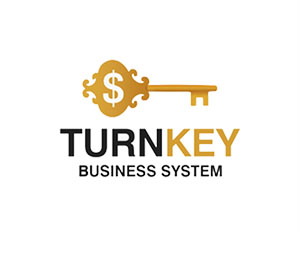Modern and Green Data Centers: The Cornerstone of Sustainable Digital Infrastructure

Modern and Green Data Centers: The Cornerstone of Sustainable Digital Infrastructure
In the 21st century, data centers have become the backbone of the global digital economy. They power everything from cloud computing and artificial intelligence to streaming services and e-commerce platforms.
However, as the demand for data processing grows exponentially, so does the environmental impact of these facilities.
Traditional data centers are notorious for their high energy consumption, carbon emissions, and resource inefficiencies. In response, the industry is undergoing a transformative shift toward modern and green data centers , which combine cutting-edge technology with eco-friendly practices to create a sustainable future.
This article explores the evolution of data centers, the concept of green data centers, their key features, benefits, challenges, and the road ahead for this critical component of modern infrastructure.
However, as the demand for data processing grows exponentially, so does the environmental impact of these facilities.
Traditional data centers are notorious for their high energy consumption, carbon emissions, and resource inefficiencies. In response, the industry is undergoing a transformative shift toward modern and green data centers , which combine cutting-edge technology with eco-friendly practices to create a sustainable future.
This article explores the evolution of data centers, the concept of green data centers, their key features, benefits, challenges, and the road ahead for this critical component of modern infrastructure.

Modern and Green Data Centers: The Cornerstone of Sustainable Digital Infrastructure
The Evolution of Data Centers
Data centers have come a long way since their inception in the mid-20th century. Initially, they were simple server rooms used by large organizations to store and process data locally. Over time, advancements in technology led to the development of centralized facilities capable of handling vast amounts of information. The rise of the internet, cloud computing, and IoT (Internet of Things) has further accelerated the demand for robust and scalable data center solutions.However, traditional data centers have faced significant criticism for their environmental footprint. According to studies, data centers consume approximately 1-2% of global electricity , a figure that rivals the energy usage of entire countries like Argentina or Sweden. Additionally, cooling systems required to maintain optimal operating temperatures account for nearly 40% of a data center’s energy consumption . This inefficiency, coupled with reliance on fossil fuels, has made data centers a significant contributor to greenhouse gas emissions.
To address these challenges, the industry has embraced the concept of green data centers , which prioritize sustainability without compromising performance.
What Are Modern and Green Data Centers?
A modern data center refers to a facility equipped with state-of-the-art technologies designed to enhance efficiency, scalability, and reliability. These centers leverage automation, AI-driven analytics, and modular designs to optimize resource utilization and reduce operational costs.A green data center , on the other hand, takes modernization a step further by integrating environmentally friendly practices into every aspect of its operations. The primary goal of a green data center is to minimize energy consumption, reduce carbon emissions, and promote circular economy principles. These facilities are not only energy-efficient but also designed to coexist harmoniously with the environment.
Green data centers represent a paradigm shift in how we think about digital infrastructure. By adopting renewable energy sources, innovative cooling techniques, and sustainable materials, they aim to achieve net-zero emissions and align with global climate goals.
Key Features of Green Data Centers
1. Renewable Energy IntegrationOne of the most significant hallmarks of green data centers is their reliance on renewable energy sources such as solar, wind, and hydropower. Many facilities are equipped with on-site renewable energy generation systems, including solar panels and wind turbines. Others partner with utility providers to source clean energy directly from the grid. For example, Google and Microsoft have committed to powering their data centers entirely with renewable energy by 2030.
Renewable energy integration not only reduces dependence on fossil fuels but also lowers operational costs over the long term. It also helps companies meet regulatory requirements and consumer expectations for sustainability.
2. Energy-Efficient Design
Green data centers employ advanced architectural designs to maximize energy efficiency. Key innovations include:
Modular Construction: Prefabricated modules allow for flexible expansion and reduced material waste during construction.
Hot/Cold Aisle Containment: This technique isolates hot and cold air streams within the facility, improving cooling efficiency.
Liquid Cooling Systems: Unlike traditional air-based cooling, liquid cooling uses water or specialized fluids to dissipate heat more effectively, reducing energy consumption.
These design elements ensure that data centers operate at peak efficiency while minimizing resource waste.
3. AI-Driven Energy Management
Artificial intelligence plays a crucial role in optimizing the performance of green data centers. AI algorithms analyze real-time data to predict energy usage patterns, identify inefficiencies, and adjust resources accordingly. For instance:
Predictive maintenance prevents equipment failures and extends the lifespan of hardware.
Dynamic workload distribution ensures that servers operate at optimal capacity, avoiding unnecessary energy consumption.
AI-driven energy management not only enhances operational efficiency but also contributes to significant cost savings.
4. Waste Heat Recovery
Traditional data centers often release excess heat into the atmosphere, wasting valuable thermal energy. Green data centers tackle this issue through waste heat recovery systems , which capture and repurpose heat generated by servers. Applications include:
Heating nearby buildings or residential areas.
Providing hot water for local communities.
Powering industrial processes that require thermal energy.
By turning waste into a resource, these systems exemplify the principles of sustainability and circularity.
5. Sustainable Materials
The construction of green data centers prioritizes the use of eco-friendly materials. Examples include:
Recycled steel and aluminum for structural components.
Low-emission concrete to reduce carbon dioxide output during production.
Biodegradable insulation materials to improve energy efficiency.
These choices minimize the environmental impact of building new facilities while promoting responsible sourcing practices.
6. Carbon Offsetting Programs
While green data centers strive to eliminate emissions altogether, some residual carbon footprints remain unavoidable. To address this, many operators invest in carbon offsetting programs such as reforestation projects, methane capture initiatives, or investments in renewable energy credits. These efforts help neutralize any remaining emissions and contribute to broader climate action goals.
Benefits of Modern and Green Data Centers
1. Environmental ImpactThe transition to green data centers significantly reduces the environmental footprint of digital infrastructure. By adopting renewable energy and energy-efficient technologies, these facilities lower greenhouse gas emissions, conserve natural resources, and mitigate climate change risks.
2. Cost Savings
Energy-efficient technologies translate into substantial cost savings for operators. For example, reduced energy bills, extended equipment lifespans, and streamlined operations all contribute to improved financial performance. Over time, the initial investment in green technologies pays off through lower operational expenses.
3. Corporate Responsibility
Companies that adopt green data centers enhance their reputation as environmentally conscious organizations. In an era where consumers increasingly value sustainability, businesses that prioritize eco-friendly practices gain a competitive edge and strengthen brand loyalty.
4. Regulatory Compliance
Governments worldwide are introducing stricter regulations to combat climate change. By transitioning to green data centers, organizations ensure compliance with evolving environmental laws and avoid potential fines or penalties.
5. Future-Proofing Operations
As sustainability becomes a non-negotiable requirement for businesses, green data centers position organizations for long-term success. They demonstrate adaptability to changing market demands and alignment with global sustainability trends.
Challenges in Transitioning to Green Data Centers
Despite the numerous advantages, transitioning to green data centers presents several challenges:1. High Initial Costs
Implementing renewable energy systems, advanced cooling technologies, and AI-driven solutions requires significant upfront investment. Smaller organizations may struggle to afford these upgrades, creating barriers to adoption.
2. Limited Availability of Renewables
In certain regions, access to renewable energy sources remains limited due to geographic or infrastructural constraints. This can hinder efforts to fully decarbonize data center operations.
3. Balancing Performance and Sustainability
Achieving sustainability goals without compromising performance is a delicate balancing act. Operators must ensure that eco-friendly measures do not negatively impact service quality or uptime.
4. Technological Limitations
Some emerging technologies, such as liquid cooling or AI-driven analytics, are still in the early stages of adoption. Widespread implementation may take time, delaying progress toward greener operations.
The Road Ahead: Building a Sustainable Future
The shift toward modern and green data centers represents a pivotal moment in the evolution of digital infrastructure. As the world becomes increasingly interconnected, the demand for data processing will continue to grow. Without intervention, the environmental consequences could be catastrophic. However, by embracing sustainable practices, the industry can support technological progress while safeguarding the planet.Several trends are shaping the future of green data centers:
Edge Computing: Decentralized data centers located closer to end-users reduce latency and energy consumption associated with long-distance data transmission.
Hydrogen Fuel Cells: Emerging technologies like hydrogen fuel cells offer promising alternatives to traditional backup power systems, providing clean and reliable energy.
Circular Economy Initiatives: Companies are exploring ways to recycle old hardware components and minimize electronic waste.
Governments, businesses, and consumers must collaborate to accelerate this transition. Policymakers can incentivize green investments through tax breaks and subsidies, while corporations can lead by example by committing to net-zero targets. Consumers, too, play a vital role by supporting brands that prioritize sustainability.
Conclusion: A Greener Tomorrow Starts Today
Modern and green data centers are no longer optional—they are essential for a sustainable digital future. By integrating renewable energy, leveraging advanced technologies, and adopting eco-friendly practices, these facilities demonstrate that innovation and environmental stewardship can coexist. As we navigate the complexities of the digital age, it is imperative that we build infrastructure that supports both human progress and planetary health.The journey toward green data centers is just beginning, but the destination—a cleaner, smarter, and more resilient world—is well worth the effort. Together, we can transform the data center industry into a beacon of sustainability, proving that a connected future can also be a sustainable one.
#GreenDataCenters #Sustainability #DigitalTransformation









Report
My comments